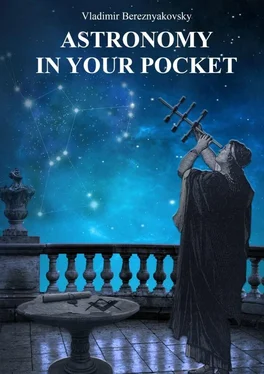Vladimir Bereznyakovsky - Astronomy in your pocket
Здесь есть возможность читать онлайн «Vladimir Bereznyakovsky - Astronomy in your pocket» — ознакомительный отрывок электронной книги совершенно бесплатно, а после прочтения отрывка купить полную версию. В некоторых случаях можно слушать аудио, скачать через торрент в формате fb2 и присутствует краткое содержание. ISBN: , Жанр: Прочая детская литература, Прочая научная литература, Физика, на английском языке. Описание произведения, (предисловие) а так же отзывы посетителей доступны на портале библиотеки ЛибКат.
- Название:Astronomy in your pocket
- Автор:
- Жанр:
- Год:неизвестен
- ISBN:9785005105240
- Рейтинг книги:4 / 5. Голосов: 1
-
Избранное:Добавить в избранное
- Отзывы:
-
Ваша оценка:
- 80
- 1
- 2
- 3
- 4
- 5
Astronomy in your pocket: краткое содержание, описание и аннотация
Предлагаем к чтению аннотацию, описание, краткое содержание или предисловие (зависит от того, что написал сам автор книги «Astronomy in your pocket»). Если вы не нашли необходимую информацию о книге — напишите в комментариях, мы постараемся отыскать её.
Astronomy in your pocket — читать онлайн ознакомительный отрывок
Ниже представлен текст книги, разбитый по страницам. Система сохранения места последней прочитанной страницы, позволяет с удобством читать онлайн бесплатно книгу «Astronomy in your pocket», без необходимости каждый раз заново искать на чём Вы остановились. Поставьте закладку, и сможете в любой момент перейти на страницу, на которой закончили чтение.
Интервал:
Закладка:
WILLIAM HERSCHEL
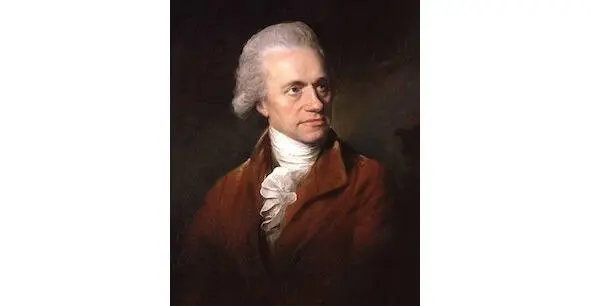
In observational astronomy, William Herschel can be called Columbus, because he was the first with his telescope to go beyond our galaxy, expanding the Solar system and “moving” the Sun. William was born in 1738 in Germany in the family of a musician of the Hanoverian guard. From the age of 15, he played in the same orchestra on the violin, organ and oboe, the latter of which is the most complex instrument. In 1757, when the seven Years’ war began, the Anglo-Prussian army was defeated at the battle of Hastenbeck, and Herschel fled to England, for which he was accused of desertion. Herschel changed his name to English and quickly learned English. His musical interest led him to mathematics, which led him to optics, and optics to astronomy. From the age of 35 to the end of his life, he devoted himself entirely to astronomy. His observations of cosmic double stars and numerous works laid the Foundation for the modern theory of double stars. In 1781 William Herschel discovered a new planet in the Solar system – Uranus, for which he received the Copley medal, which is considered the oldest and most prestigious award of the Royal society of London, and in 1782 was awarded the Copley medal. He was given the title of astronomer by the king.
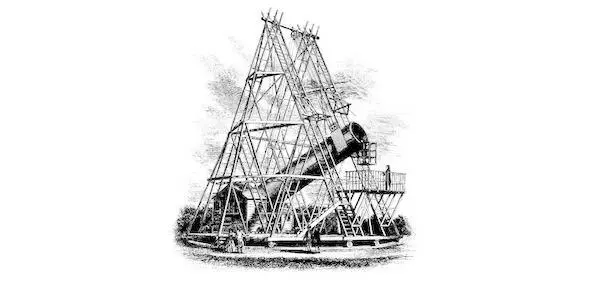
12-meter focal length telescope
Having assembled dozens of advanced telescopes, the largest of which is a 12-meter focal length telescope, Herschel studied deep space objects, discovering more than 2,400 such objects, known as nebulae. In addition to Uranus, Herschel discovered four other objects in the Solar system: in 1789, two moons of Saturn, Mimas and Enceladus, and in 1787, two moons of Uranus, Titania and Oberon. Herschel was the first to express the idea of the evolution of cosmic matter under the influence of gravitational forces. For almost 40 years, he observed sunspots and recorded their number, shape, and size. Herschel also hypothesized that the milky Way has the shape of a disk, and the Solar system is part of it. Later, the incredible fact was established that in addition to the movement of all the planets around the Sun, the Sun itself moves around the center of our galaxy at a speed of about 200—220 km/sec. In 1800, studying solar filters, Herschel discovered infrared radiation, the use of which later became the Foundation in medicine related to tissues, in pasteurization of products, protection of premises and night vision devices. The great scientist died in 1822, having lived 83 years, and on his tombstone it is written: “Broke the bolts of Heaven.”
CAMILLE NICOLAS FLAMMARION
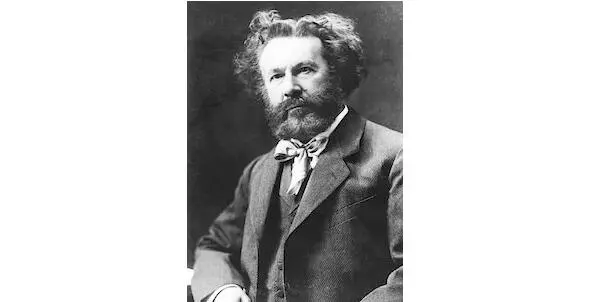
When we study great scientists, we first look at their discoveries and achievements, and how we can take advantage of them. Camille Flammarion was the founder of the French astronomical society, and his most important scientific achievements are related to the observation of double and multiple stars, as well as the study of Mars. He wrote the famous book “the planet Mars and its habitat”, which contains all known observations and which is still used by many scientists, and also studied the earth’s atmosphere, climate and volcanoes.
Camille Flammarion was born on February 26, 1842 in a poor family in the small town of Montigny-Le-Roi in France. When the family moved to Paris in 1853, Camille became a gravel apprentice, gaining drawing skills. Despite the fact that Flammarion did not receive a higher education, from the age of 16 he already worked as a cruncher at the Paris Observatory. For 60 years, Camille Flammarion compiled and regularly published monthly maps of the sky showing the location of the planets, and held monthly scientific conferences and meetings. Major works of Flammarion have gone through dozens of editions, sold hundreds of thousands of copies, have been translated into absolutely all European languages and brought the author a great reputation. The great French scientist died in 1925 at the age of 84, and in memory of the contribution he made, craters on the moon and on Mars, many asteroids and an entire Observatory were named after him.
ALBERT EINSTEIN
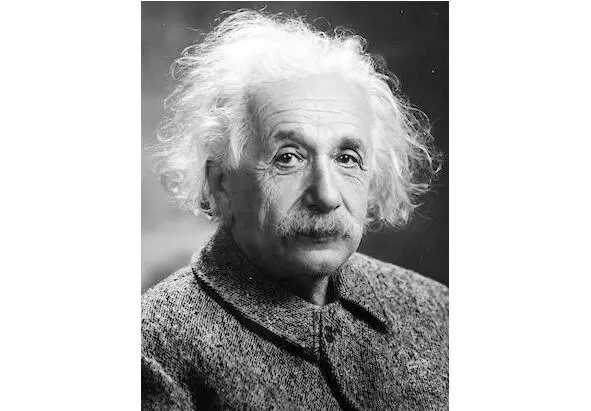
Albert Einstein – one of the greatest thinkers of all time, it is with his name associated with the completion of the formation of classical physics, which began Newton and Galileo. Despite the fact that Einstein had visited many of the world’s largest observatories, his “tool” was not astronomical tubes, but theoretical thinking. The ideas that Einstein gave to science freed it from outdated philosophical doctrines and beliefs.
Albert Einstein was born on March 14, 1879 in the Bavarian city of Ulm. As a child, the future genius of Einstein did not manifest itself in any way, albert was a reserved and quiet boy who was only able to repeat short phrases by the age of seven. When, at the age of 12, albert read a random book on geometry, he realized the beauty of mathematics. Albert inherited his musical ability from his mother, and his logical thinking came from his father. At school, Einstein openly expressed dissatisfaction with the system in which he studied and which raised an obedient “herd animal”. His homeroom teacher said that albert should leave school because his mere presence in the classroom completely undermines respect for teachers. In 1895, at the age of 16, Albert left the gymnasium. He tried to enter the Polytechnic school in Zurich, known for its high level of teaching, but because of the failure in the exams in history and foreign languages, Аlbert had to re-pass the exams, and in 1896 he entered the Polytechnic, determined to become a teacher of physics. As a student, Einstein did not forget about music, because it was in the classical masterpieces of great musicians that he saw the harmony that he was looking for when building his theories. In 1900 Einstein passed the exam to receive a diploma of teacher of physics, but the work received only two years later. 1905 was the most successful year for Einstein, because he managed to publish five articles that were masterpieces of scientific thought. His hypotheses about light quanta-elementary particles of electromagnetic radiation allowed to explain the appearance of current when a substance is illuminated by short-wave radiation. Despite the fact that this effect was discovered in 1886, it did not fit into the framework of wave theory. It was for this work that Einstein received the Nobel prize, and this work marked the beginning of a new quantum era in the development of physics.
Конец ознакомительного фрагмента.
Текст предоставлен ООО «ЛитРес».
Прочитайте эту книгу целиком, на ЛитРес.
Безопасно оплатить книгу можно банковской картой Visa, MasterCard, Maestro, со счета мобильного телефона, с платежного терминала, в салоне МТС или Связной, через PayPal, WebMoney, Яндекс.Деньги, QIWI Кошелек, бонусными картами или другим удобным Вам способом.
Интервал:
Закладка:
Похожие книги на «Astronomy in your pocket»
Представляем Вашему вниманию похожие книги на «Astronomy in your pocket» списком для выбора. Мы отобрали схожую по названию и смыслу литературу в надежде предоставить читателям больше вариантов отыскать новые, интересные, ещё непрочитанные произведения.
Обсуждение, отзывы о книге «Astronomy in your pocket» и просто собственные мнения читателей. Оставьте ваши комментарии, напишите, что Вы думаете о произведении, его смысле или главных героях. Укажите что конкретно понравилось, а что нет, и почему Вы так считаете.
